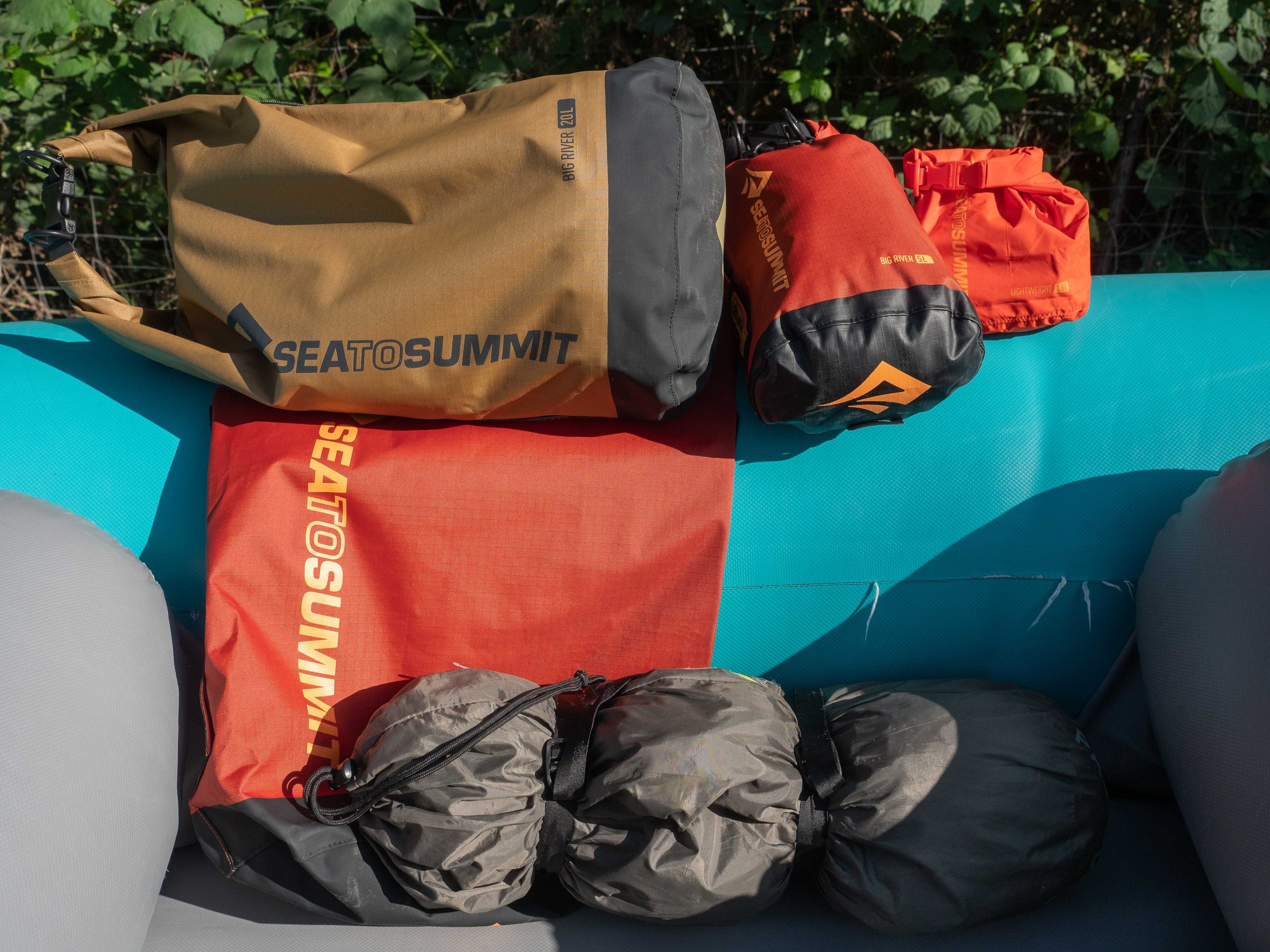Dialing in your Camping Sleep System
So, you pulled a permit for that dream section of river, maybe it’s THE Canyon, Middle Salmon, or just a rogue trip and you’ve been waiting for the perfect time of year to go. You know what will make that trip absolutely suck? Terrible sleeping accommodations. One of the best parts of multi day rafting trips is spending all of those amazing nights focused on the river you have been waiting so long to enjoy, so let’s talk about how to make it absolutely awesome!
Your camping sleep system is a combination of several pieces of gear that work together to provide a comfortable and safe place to sleep on multi day rafting, camping, or backpacking trips. If you’re going on your first multi day you’re going to want to have this on lockdown so let’s, take a look at the general components of a camp sleep system
Tent or Sun Shelter
Sleeping Pad
Sleeping Bag
Sleeping Bag Liner
Pillow
A Layered Dry Bag System
Tents For Multiday Rafting
The tent or other shelter is the third main component of a camping sleep system. It provides a place to sleep that is protected from the elements, such as rain, wind, and bugs. Tents come in a variety of sizes and shapes, but having a 2-to-3-person tent is ideal for river trips as it can give 1-2 people extra storage space protected from bugs and the elements. It is important to choose a tent that is appropriate for the number of people you will be sleeping with, as well as the conditions you will be sleeping in. For example, a 4-season tent with a waterproof rainfly and a sturdy frame is a good choice for rainy environments, while a lighter tent with good ventilation and a sunshade might be more ideal for hot environments.
Sleeping Pad
The sleeping pad is another important component of a camping sleep system. It provides cushioning and insulation, helping to keep you warm and comfortable while you sleep. Sleeping pads come in a variety of materials, including foam, self-inflating foam, and air-filled. Some are designed to be extra-thick or extra-wide, providing maximum comfort and support for larger individuals or those with specific needs. If you’re spending 10 to 20 days on river trip you may want to consider a thicker pad for more comfort.
Sleeping Bag
The sleeping bag is the most important component of a camping sleep system, since it keeps you warm and insulated so you can stay comfortable while sleeping in cold weather. Sleeping bags come in a variety of shapes, sizes, and insulation materials, so it is important to choose one that is appropriate for the conditions you will be sleeping in. For example, a down-filled sleeping bag is a good choice for cold weather, as down is an excellent insulator and lightweight. However, it is not as effective at retaining warmth when it is wet, so it may not be the best choice for humid or rainy environments.
Sleeping Bag Liner
A sleeping bag liner is a thin, lightweight, and usually rectangular-shaped piece of fabric that is designed to be placed inside a sleeping bag. It serves several important functions, including adding extra warmth, protecting the sleeping bag from dirt and sweat, and helping to keep your bedding clean on long multiday trips.
a sleeping bag liner can also help to extend the life of your sleeping bag. By adding an extra layer of protection between your body and the sleeping bag, the liner helps to reduce wear and tear on the bag. This can help to prolong its lifespan, saving you money and time since you can wash the liner and have fresh bedding even out on an adventure.
Camping Pillow
Ah the trusty camp pillow is an often-overlooked piece of gear especially in the modern era of ultra-light hiking. Every time I’ve been to a 3-letter big box camping store in the last 5 years they’ve crapped on pillows because 2 ounces is too much weight for your pack. The awesome thing about rafting is you can bring pretty much everything and nothing will improve your sleep like a good pillow. I’ve slept on a lot of smelly damp PFD and drybag pillows and they just don’t compare to a real pillow especially if you are a side sleeper like me. Nothing ruins my river trip more than not being able to look left because I have a jammed-up muscle in my neck from a crappy pillow.
A Layered Drybag System
Having a good thick drybag system that will keep the river out of your sleep system is essential. Other outdoor pursuits don’t even have this on their radar, but as boaters nothing is worse than wet bedding. We always pack multiple drybags to partition our gear and keep everything separate while providing extra layers of redundancy to our sleep system. Having one main bag that is super solid is worth it’s weight in gold though.
In addition to these core components, you might also consider adding a few other components to your camping sleep system bag a hammock, a lightweight blanket, and a camp light. These items can help to make your sleep system more comfortable and convenient, and are especially helpful if you are planning on spending multiple nights in the wilderness. Ultimately having your sleep system dialed in for multi day raft trips is essential to your performance and enjoyment when it comes to the trip. Multiday rafting is just as much about the life styling as it is the boating so make sure you are comfy in whatever canyon you choose to explore.










